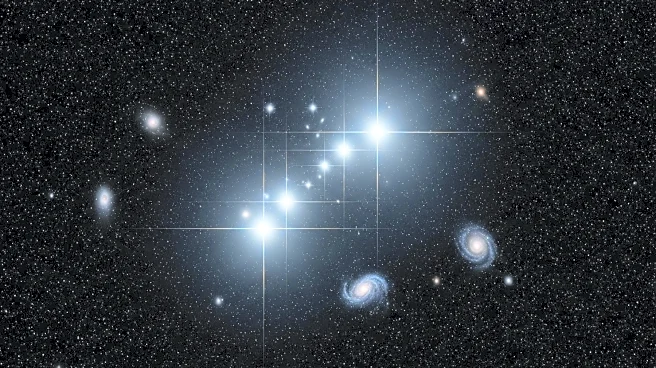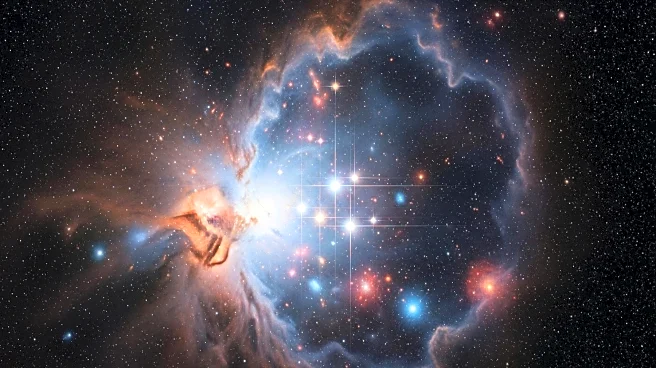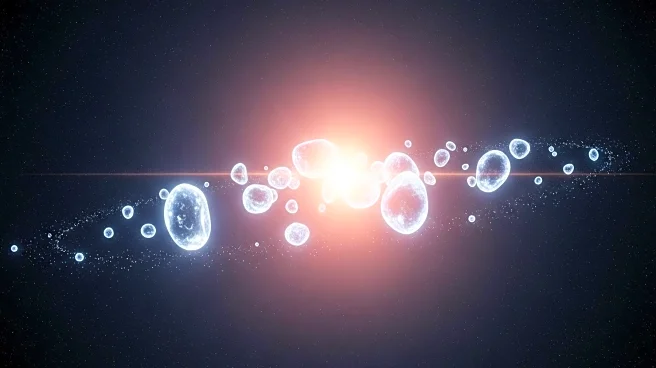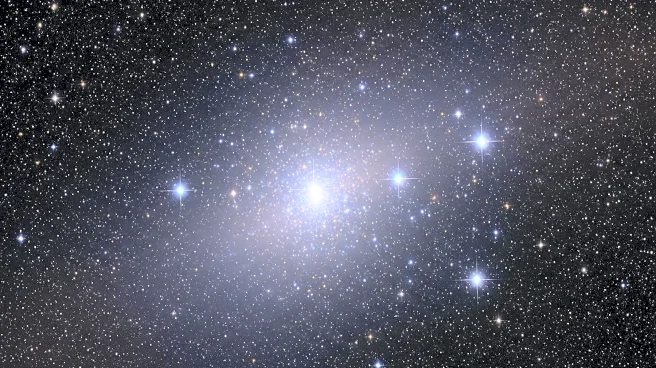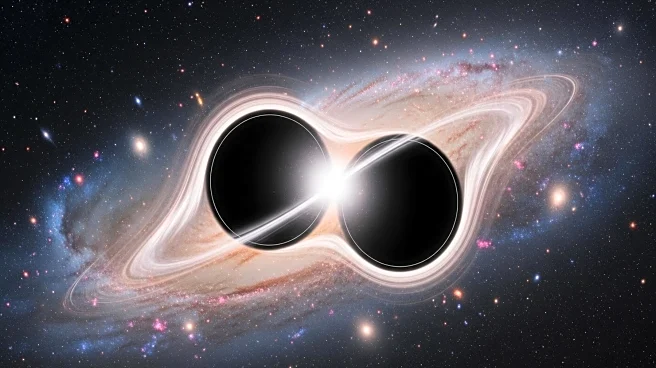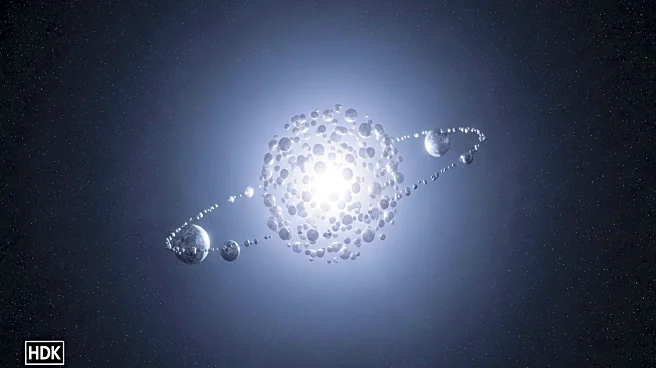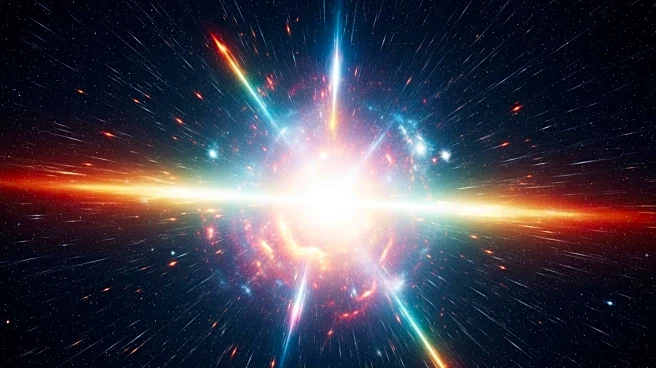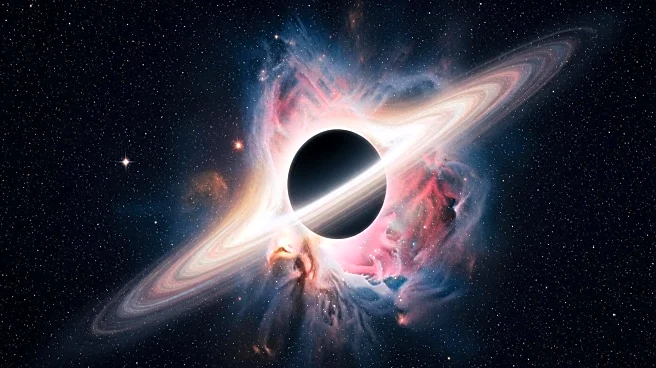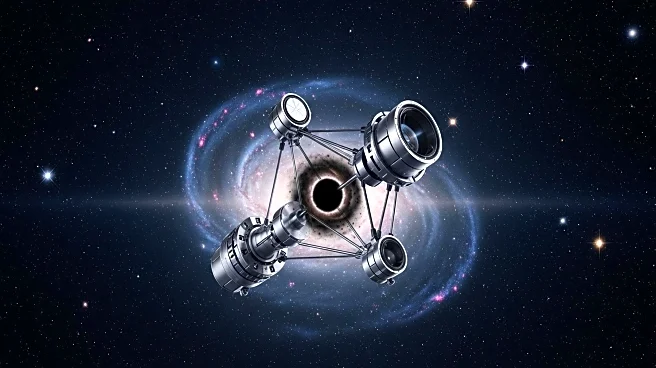What's Happening?
Recent research has challenged the traditional understanding of the universe's first stars, suggesting that they were not exclusively massive. Studies indicate that turbulence and molecular coolants in early gas clouds could have led to the formation of lower-mass stars. Helium hydride, the universe's first molecule, played a crucial role in cooling these gas clouds, enabling the formation of smaller stars. This discovery opens new avenues for exploring the origins of the cosmos and the processes that led to the formation of planets and life. Astronomers are now aiming to discover these ancient stars, which could reshape our understanding of the universe's early days.
Why It's Important?
The discovery of lower-mass stars in the early universe challenges previous assumptions and suggests a more diverse range of star masses than previously thought. This revelation has significant implications for our understanding of stellar evolution and the formation of complex structures in the cosmos, including galaxies and planetary systems. By identifying these ancient stars, scientists can gain insights into the processes that shaped the universe and potentially uncover new information about the origins of life. The findings highlight the complex interplay between chemistry and astrophysics in shaping the cosmos.
What's Next?
Astronomers are continuing their efforts to identify these ancient stars, which pose a significant challenge due to their faintness. Ongoing observational efforts aim to discover these stars and further explore the implications of their existence. The research raises intriguing questions about the formation of the first stars and their role in shaping the cosmos, potentially leading to new discoveries in the field of astrophysics.
Beyond the Headlines
The discovery of helium hydride's role in cooling early gas clouds highlights the importance of molecular chemistry in the formation of stars. This finding challenges previous assumptions about the scarcity of molecular hydrogen and suggests that early star-forming environments were more chemically active than previously believed. The research underscores the need for a deeper understanding of the chemical processes that influenced the formation of the universe's first stars.

